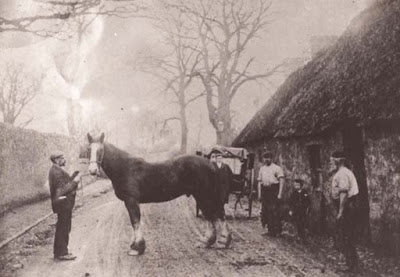Old newspapers are invaluable in giving us a picture of the times. So what was occupying the mind of this new village journal?
The editorial promised to "advocate measures that are for the moral, social and industrial benefits of the community" .
Is public spirit in Earlston declining?
This was the controversial question posed in a letter from "Alick" who deplored the demise or non activity of several societies, including
the Literary Society, with its programme of interesting lectures, the
Choral Union "that did something creditable in the musical way" and the "well
managed Ornithological Society of considerable pretensions with an
annual exhibition, and a competition which drew a large number of
exhibitors and visitors". He also asked that someone who was at the Public Picnic and was "gifted with a graphic pen forward a description of the grand proceedings of that occasion for publication in the next edition of the "Comet".
The letter ends:
The letter ends:
"What is to become of Earlston if something is not done to arrest the galloping decline of public spirit which seems to have set in with such virulence."Unfortunately we do not have later editions of the newspaper to find what reaction twas provoked by this viewpoint on the state of the village.
Among other reports were:
- Under
the heading of Local Jottings, the Right Hon. Mr. E Marjoribanks,
M.P. and Whip for the Liberal Party, was meeting his constituents and
giving reports on his stewardship - but he omitted to visit Earlston,
much to the concern of the newspaper, which questioned "why"?
- A
General Election was looming, with the prediction that Mr.
Marjoribanks would not have a walk over. Both political parties
(Liberal and Conservative) "were working quietly but actively ahead of the forthcoming struggle".
- Fishing on the Leader had been badly affected by "a great flood and tempest on Monday September 21st - Black Monday, as it has been termed", when caulds at Leaderfoot and Earlston were washed away. The fishing fraternity were "desirous to maintain and protect" fishing on the Leader" and were proposing to petition landowners to put up fish ladders.
- The Harvest - the report noted that the harvest had now been gathered in and "t
is gratifying to note in better condition than at one time expected,
there being frequent storms of wind and rain. With the serious failure
of crops in Russia and otehr foreign countries there is every prospect
that agriculturalists will have th beef nit of higher prices than have
been experienced for a number of years past."
- News of a Grand Pigeon Show in the Corn Exchange, followed by a dance 8pm to 10pm - with gentlemen admission 6d, but ladies free.
- George Crooks was offering pupils in Earlston tuition in the pianoforte, organ, harmonium, American organ and singing - and also in Italian and Spanish language.
- As was the practice of the day, large advertisements had a prominent placing on the front page, with clothiers Thomas Clendinnen, David Wallace and Miller's Drapery promoting their latest fashions. Also featured were boot-makers, James Ballantyne, Thomas Nichol and Alexander Young; clock and watch maker George Pringle; saddler and harness maker John McDonald; and grocer and ironmonger, Robert Smith.
**********
Background Information
Finding more information on "The Earlston Comet" proved a challenge, with the National Library of Scotland providing some answers, although it did not hold any copies of the title itself . There was mention of it in "The Waterloo Directory of Scottish Newspapers and Periodicals, 1800-1900", and in "Mitchell's Annual Newspaper Press Directory".
The Earlston Comet" was published by William Norrie, with "frequency irregular" between 1891 and 1894 and was then the only newspaper printed and published in Berwickshire" .
William Norrie adopted the name of "Waverley Press" for his business, and wrote and published in 1891 a book "Edinburgh Newspapers, Past and Present". Apart from those points, William Norrie has proved very elusive with no information traced on him either in Edinburgh, Midlothian or the Border counties - surprising given that the 1891 census had taken place a few months before "The Earlston Comet" first appeared on the scene.
It seems, however, that the title proved short lived. Perhaps a contributor factor was the cost of one shilling (12 pennies) which would be beyond many residents, given a loaf of bread cost around one penny.
Finding more information on "The Earlston Comet" proved a challenge, with the National Library of Scotland providing some answers, although it did not hold any copies of the title itself . There was mention of it in "The Waterloo Directory of Scottish Newspapers and Periodicals, 1800-1900", and in "Mitchell's Annual Newspaper Press Directory".
The Earlston Comet" was published by William Norrie, with "frequency irregular" between 1891 and 1894 and was then the only newspaper printed and published in Berwickshire" .
William Norrie adopted the name of "Waverley Press" for his business, and wrote and published in 1891 a book "Edinburgh Newspapers, Past and Present". Apart from those points, William Norrie has proved very elusive with no information traced on him either in Edinburgh, Midlothian or the Border counties - surprising given that the 1891 census had taken place a few months before "The Earlston Comet" first appeared on the scene.
It seems, however, that the title proved short lived. Perhaps a contributor factor was the cost of one shilling (12 pennies) which would be beyond many residents, given a loaf of bread cost around one penny.
***********
















